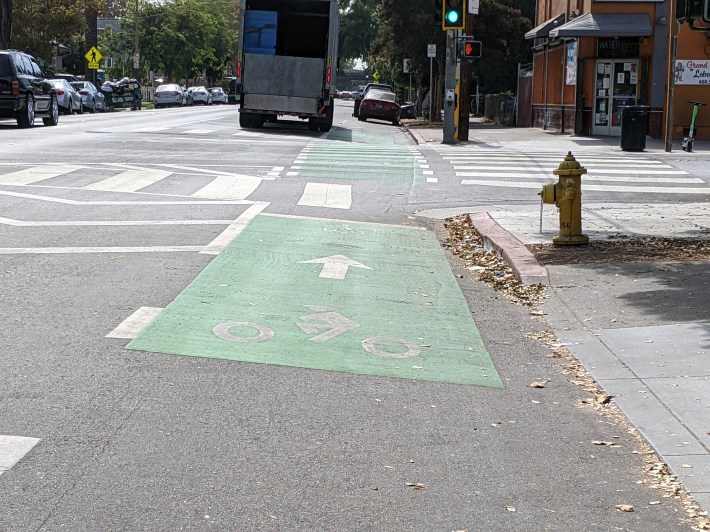Note: GJEL Accident Attorneys regularly sponsors coverage on Streetsblog San Francisco and Streetsblog California. Unless noted in the story, GJEL Accident Attorneys is not consulted for the content or editorial direction of the sponsored content.
In 2019, Streetsblog wrote about San Jose's "bad ass bike network" treatments. These treatments were essentially a template of Dutch-style protected lanes and intersections, made from inexpensive paint and posts, that were installed quickly throughout the core of downtown and around San Jose State in 2019. The intent was always to replace them with concrete as funds became available. After Streetsblog wrote about San Jose's disappointing Vision Zero Task Force meeting last week, it decided it was time to take a fresh look at conditions in downtown.
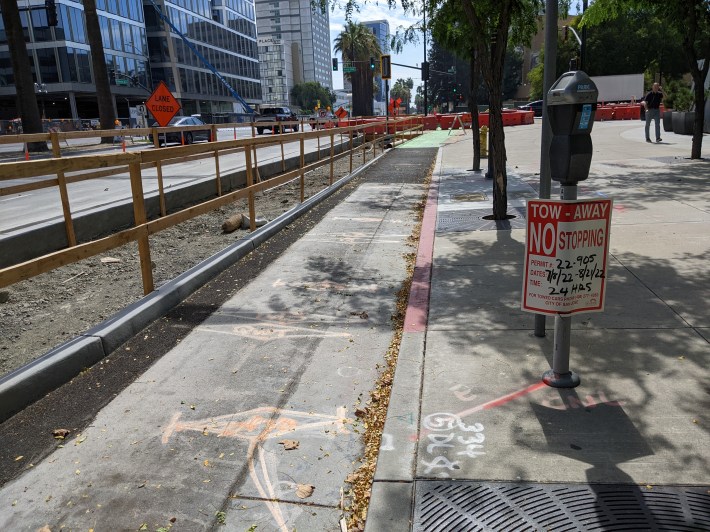
For part of the tour, Streetsblog was joined by Lennart Nout, Manager of International Strategy with the firm Mobycon in the Netherlands, part of the delegation with the Dutch Cycling Embassy currently touring the West Coast.
First, the good: the lead image and the pic above is of the under-construction protected bike lanes and intersection at the Almaden and San Fernando. Vignesh Swaminathan, the planner hired by San Jose to design much of the downtown bike network, said this section is being funded as part of Adobe's office complex expansion. Whoever's paying for it, this is top-notch Dutch-style infrastructure getting done right. Even Nout was impressed, albeit he said the curbs shouldn't be at 90 degrees, because they can cause a crash if a cyclist brushes against them.
Streetsblog also checked out concrete installations going in on 10th and 11th near San Jose State. Here bus-boarding islands and curb-protected bike lanes were being installed, also replacing earlier plastic-post treatments:
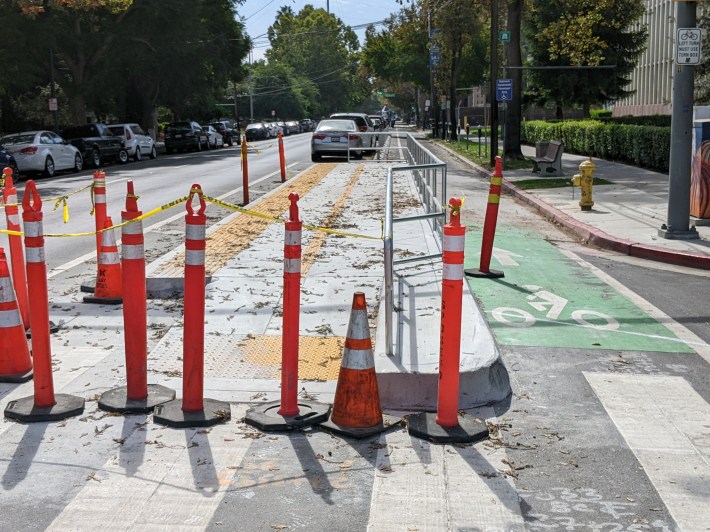
These curbs (see below) were a bit more Dutch-like, with a less severe bevel to help reduce the chances of a cyclist swerving into one and wiping out.
Streetsblog also saw the more residential sections of 10th and 11th where, as a compromise to avoid loss of parking, local-access lanes were added instead of protected bike lanes.
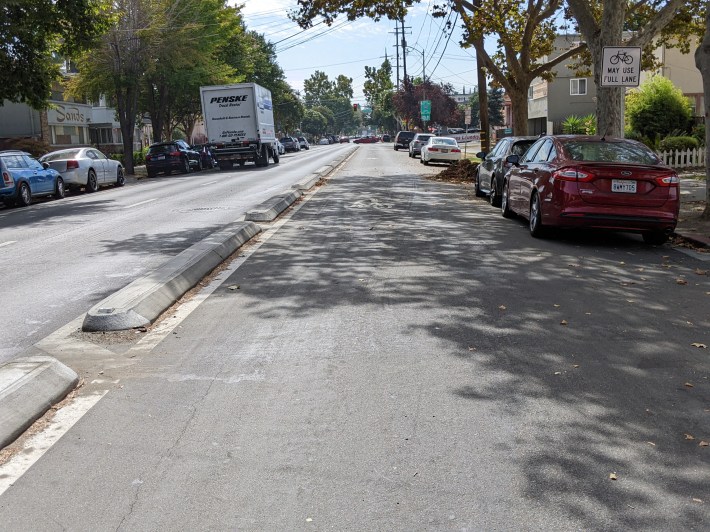
Conventional, Dutch-style protected bike lanes require eliminating parking directly next to driveways in order to maintain sight-lines, as was done, for example, on Middlefield Road in Redwood City or on Telegraph in Oakland. San Jose's frontage lane treatments certainly seems safer than the three lanes of through-traffic cyclists previously had to contend with--or the unprotected bike lanes on Hillsdale. Nevertheless, it's disappointing to see an installation that took all the work and materials for a fully protected bike lane that would segregate motorists and cyclists without actually doing it. This still isn't the kind of bike lane one would call suitable for all ages and abilities, even if it did feel much safer for an experienced cyclist.
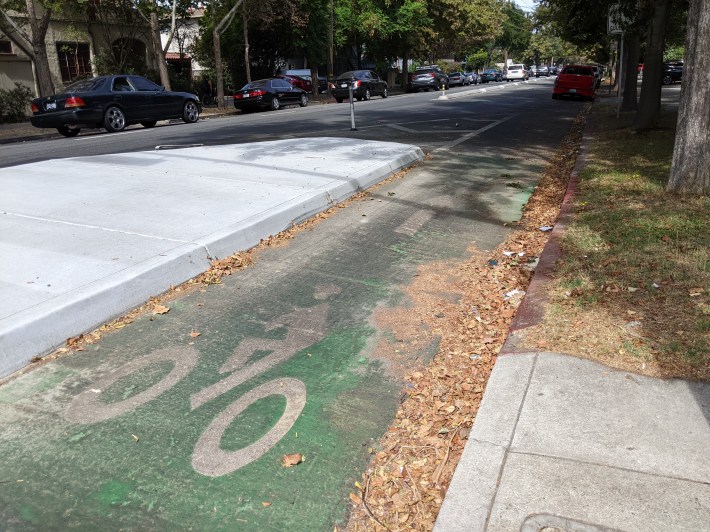
Then there was the maintenance issue in the heart of downtown. Swaminathan was critical of the city for not being further along in adding curbs and physical protection. Nout wondered why San Jose appeared to be pouring concrete forms in places rather than using faster, cheaper pre-fabbed sections, as he said they do in the Netherlands.
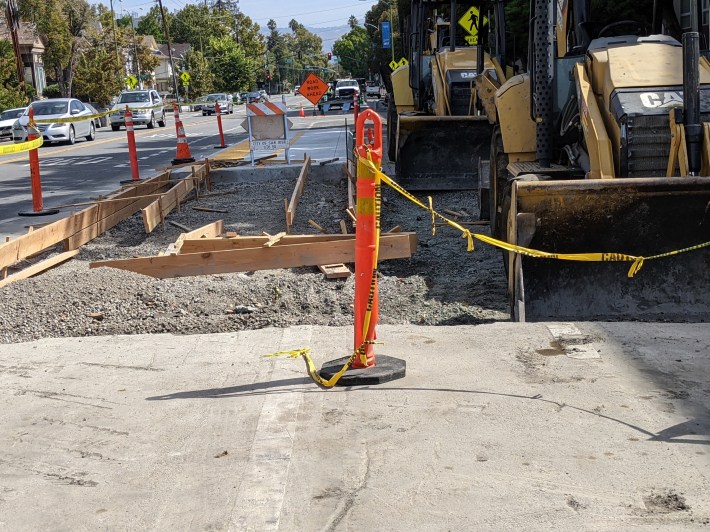
And while the city has clearly been trying to replace plastic posts--as seen below by the orange posts they used to replace some damaged green ones--they are not keeping up.
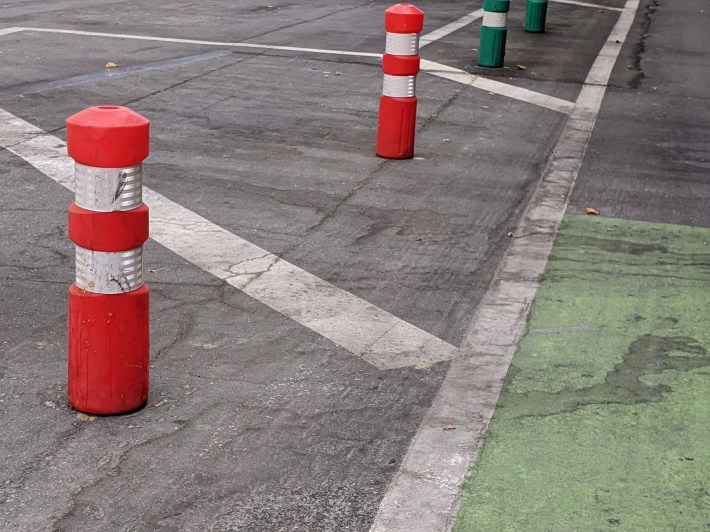
Many posts are missing. As Nout said, they should be installing solid posts at regular intervals so drivers learn--the hard way--to stop running over them. This is a treatment Swaminathan did in Emeryville, where surplus concrete garbage cans are interspersed with concrete-colored plastic posts to help make sure motorists who drive over plastic--and potentially people--quickly regret it. In other words, there's a reason his TikTok handle is Mr. Barricade.

All in all, it was great to see San Jose replacing some of these treatments in concrete, but a bit disappointing to see it taking so long and that they haven't found a way to maintain what's there as they do it.
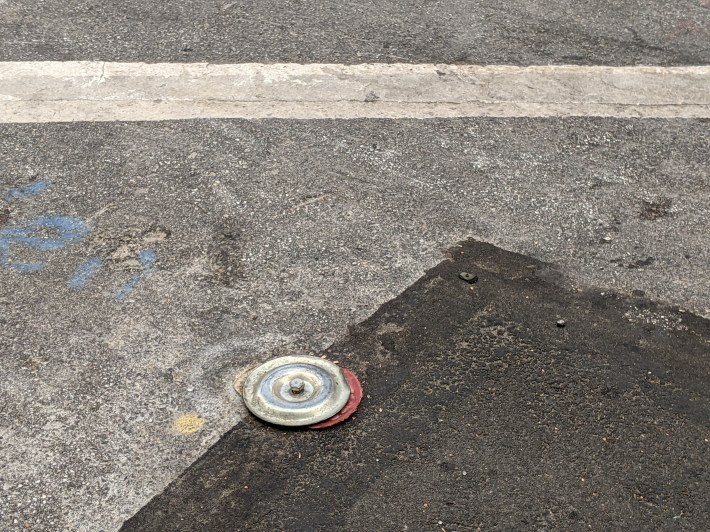
Downtown San Jose still feels like a more comfortable place to ride than it was before 2019, when these treatments were installed. As reported (and opined) previously, Streetsblog hopes San Jose will regain the focus it showed for safety in 2019 when it installed its downtown network. It needs to keep using fully-protected bike lane treatments everywhere--and then lock them in with solid concrete as soon as possible, regardless of the blowback from neighbors and politicians who put parking above safety.
More pictures below:

